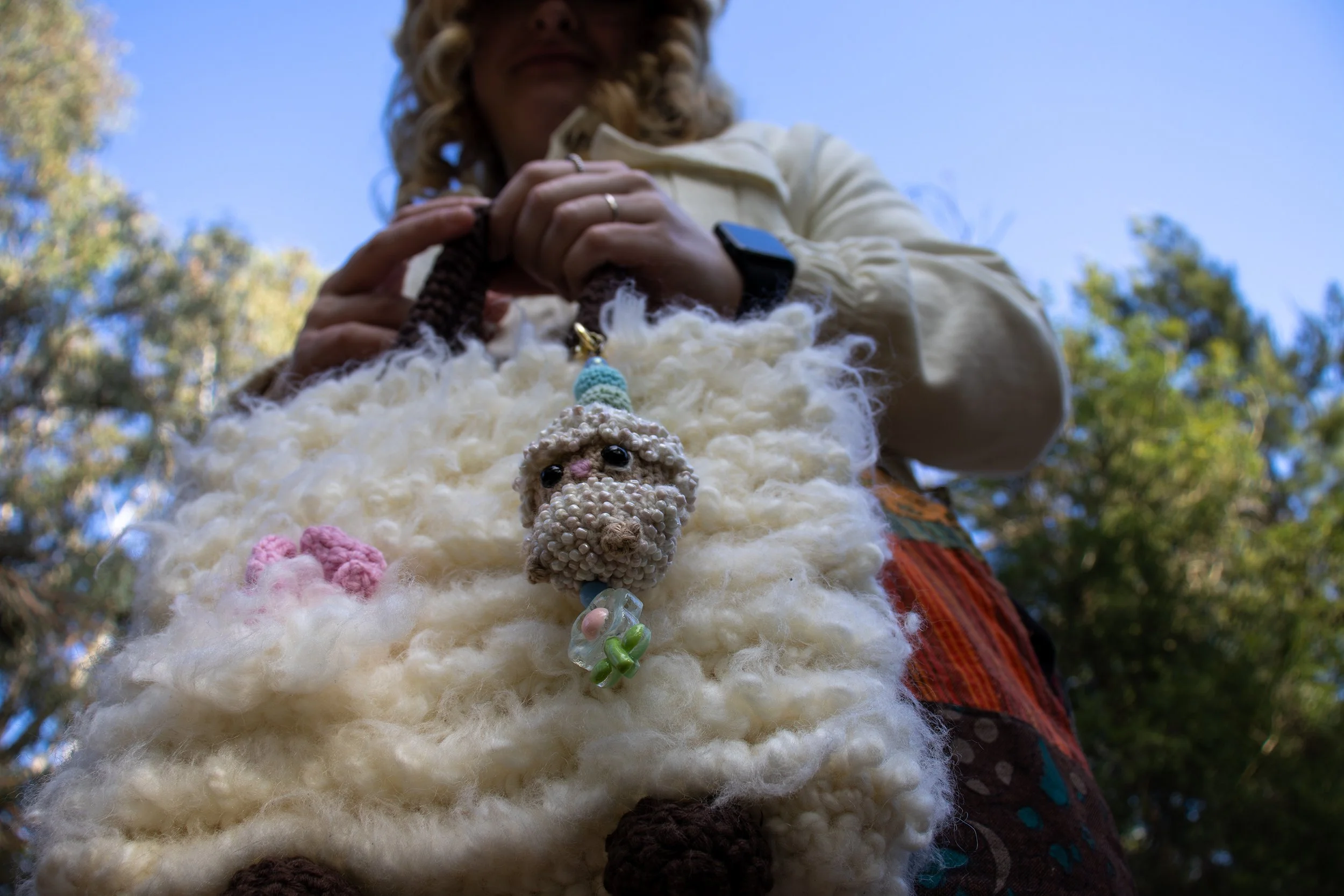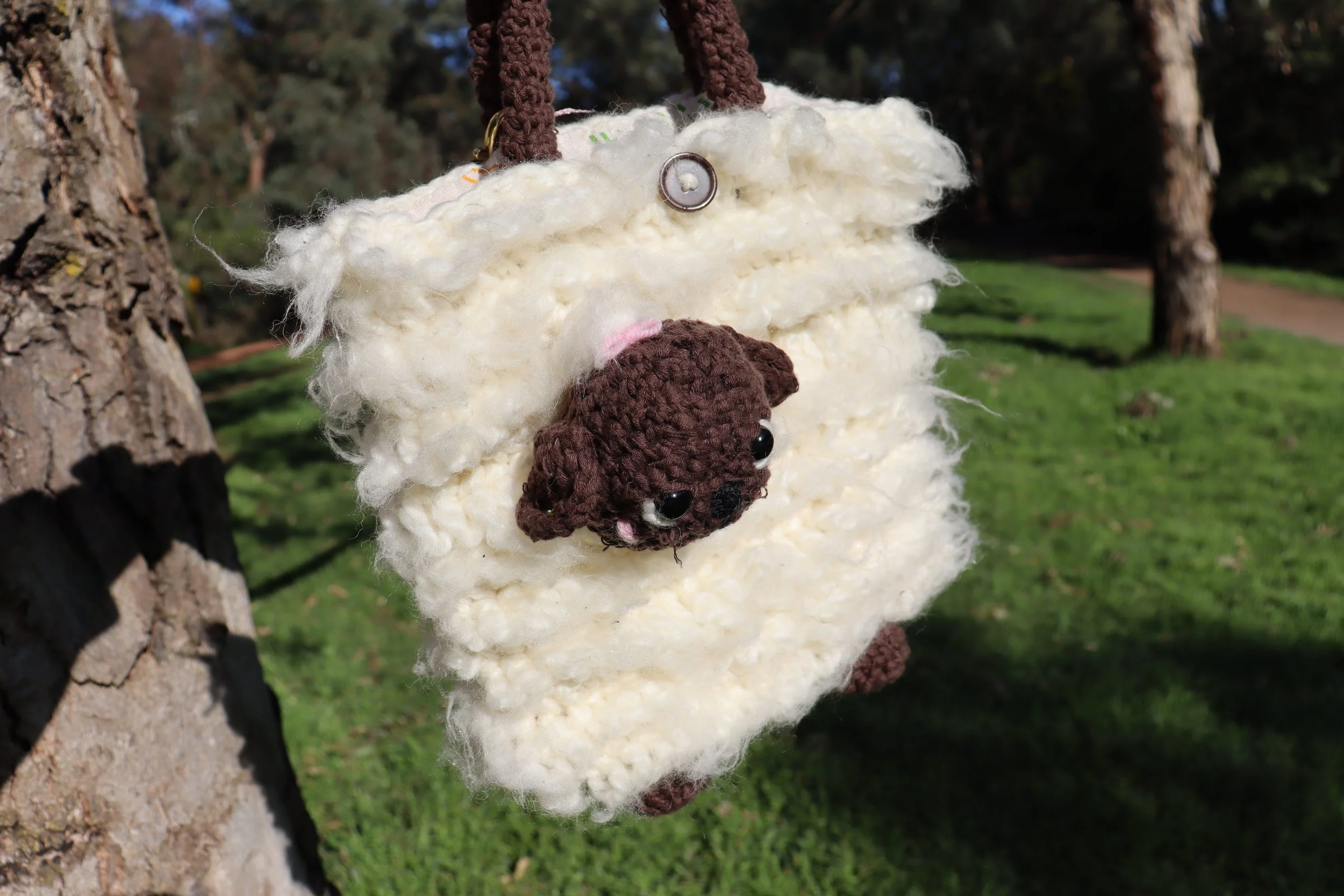
Self initiated project
Reimagined
The innovation?
Circular wool production is a sustainable method that extends the lifecycle of wool through reuse, recycling, and reducing waste. Instead of following the traditional "make, use, dispose" model, wool garments are reprocessed into new textiles or repurposed for other uses.
Helping the environment
Benefits to the Textile Industry:
Waste Reduction: Less textile waste goes to landfills.
Resource Efficiency: Reduces demand for new materials and energy.
Sustainability: Promotes eco-friendly fashion using renewable, biodegradable wool.
Cost-Effective: Lowers production costs over time.
Innovation: Encourages advancements in textile recycling and sustainability.
With these key benefits and principles in mind, I made my own bag and hat using recycled materials. This process made working with recycled materials less daunting and more approachable for those uncertain about embracing sustainability.
By repurposing old clothing, I give new life to items that would otherwise end up in landfills. My project is a small but meaningful step toward reducing that waste and promoting more responsible fashion practices
In an era of fast fashion, which produces 100 billion garments annually, a staggering 92 million tonnes are discarded into landfills.
In an era of fast fashion, which produces 100 billion garments annually, a staggering 92 million tonnes are discarded into landfills.
Progressive
I created an informational booklet to raise awareness about environmental issues through circular wool production. Using images to highlight each stage, it showcases the sustainable methods and ecological benefits, encouraging responsible consumption.
Inspiring
The booklet is an educational tool that makes sustainability more accessible by showing how recycled materials can be used creatively. By visually breaking down each step, it simplifies the concept of circular production, showing how waste can become functional, fashionable items.
Educational
My goal is to inspire others to rethink their approach to materials, while also promoting the long-term environmental and economic advantages of circularity in the textile industry. Through this project, I hope to spark curiosity and encourage more people to engage with sustainable practices, even if they are new to the idea.
Reimagined interactive booklet
Click the image to access the interactive booklet


















